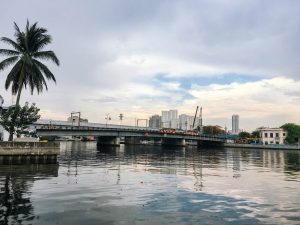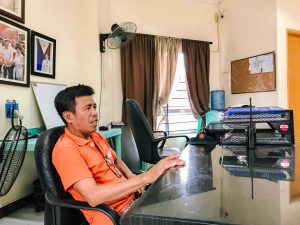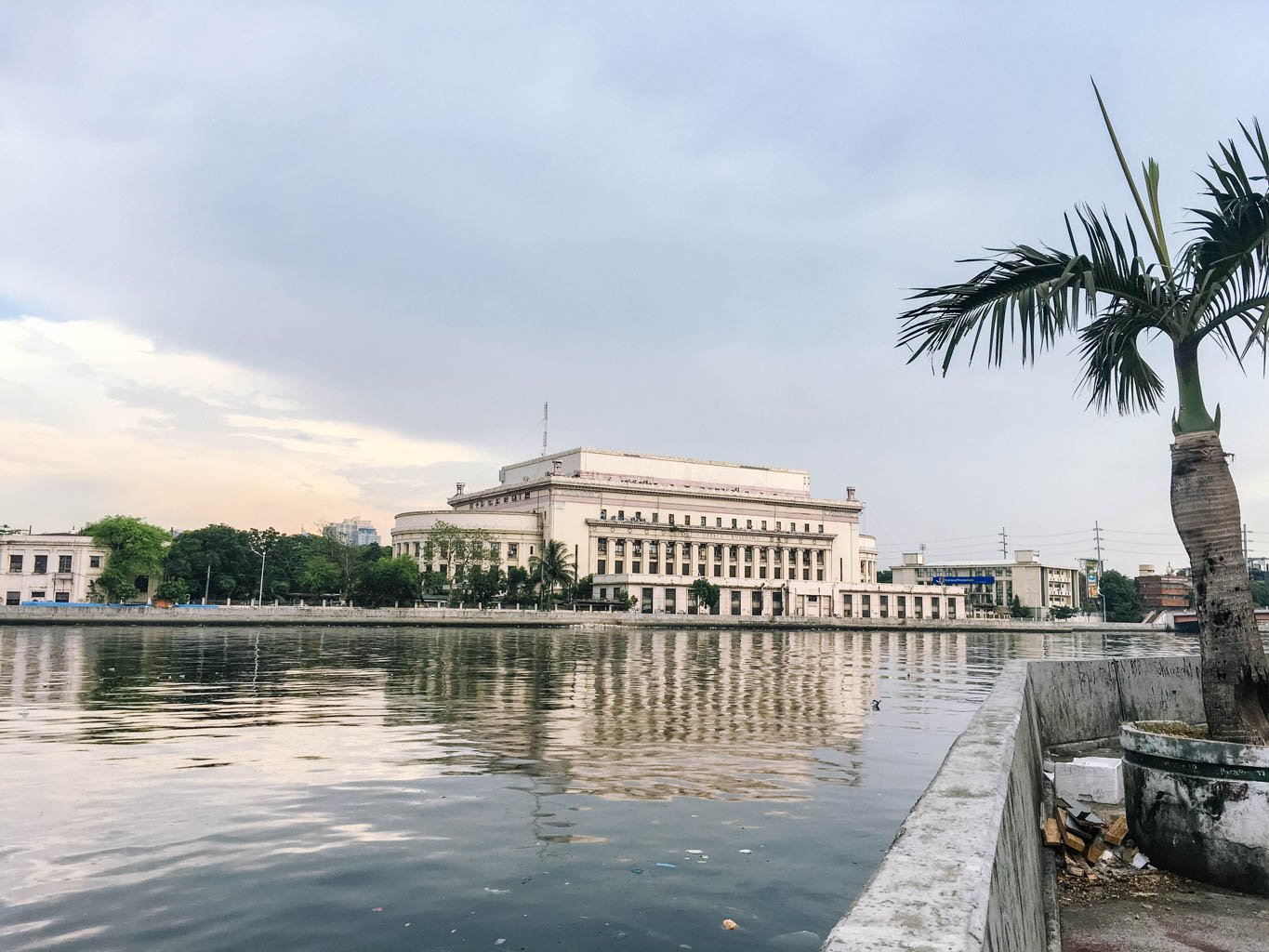Several projects have been launched here and there to help solve the lingering problem that is Pasig River, the latest being Trash Traps, the Pasig River Rehabilitation Commission (PRRC)’s effort to bring the “dead” waterway back to life.
Trash traps, which are placed in San Juan River, at the boundaries of Mandaluyong City and Quezon City, are meant to block more trash from flowing into Pasig River and to gauge where most trash are coming from.
The PRRC said it would monitor the trash collected from the nets in order to know how much trash accumulated.
The 27-kilometer Pasig River is the main waterway in Metro Manila, encompassing the country’s capital, Manila, and nearby cities of Makati, Mandaluyong, Pasig, and Taguig.
Approximately 50,000 kilograms of trash are filtered out every day from the trash traps according to PRRC. The collected garbage will be delivered to the respective dumping facilities.
Companies, local government units, and individuals who will be caught polluting the body of water will face charges of violating Republic Act 9003 or the Ecological Solid Waste Management. Those found guilty may be fined P300 pesos or sentenced to prison for one to six years.
PRRC executive director Jose Goitia said they have already sent memoranda to individuals and companies, and together with the Laguna Lake Development Authority, they are ready to shut down establishments that contribute to the pollution of the river.
Goitia urged the residents to do their part and properly dispose of their garbage.
‘Biologically dead’
World War II paved way to a spike in population growth and infrastructure surrounding Pasig River that eventually led to its massive pollution.
By the 1990s, the river was declared “biologically dead” by the Department of Environment and Natural Resources (DENR), which means that oxygen had been depleted in the water rendering it unable to support any marine life.
The major sources of water pollution in the country are inadequately treated sewage, agricultural waste water, and non-point sources such as rain and groundwater runoff from solid waste or garbage deposits, according to Greenpeace Philippines.
Each water pollutant brings different toxic and negative effects that can harm both human health and the environment.
Based on the 2006-2013 National Water Quality Status Report of the DENR, inadequate domestic wastewater treatment causes two major problems: water pollution and waterborne diseases.
Examples of waterborne diseases are diarrhea, cholera, typhoid B, dysentery, and hepatitis – most of which are also caused by untreated domestic wastewater.
Due to the vast water pollution and limited sources of clean water in the country, an estimated amount of 20,000 people die each year because of waterborne diseases according to the DENR report.
According to a study conducted by the World Health Organization (WHO) with the Department of Health (DoH) and United Nations Children Emergency Fund (UNICEF), Diarrhoea has the biggest number of victims, killing 10,000 children each year, often aged five years old and below.
Water pollution caused by agricultural wastewater may not be as familiar to others, but it also causes great danger to people’s health and environment.
On the “Impact of Agrochemicals on Soil and Water Quality,” long-term use of pesticides to control pets and diseases may actually contribute to the contamination of soil and groundwater with their residues, according to a study by Leonila Varca, an Independent Environmental Services Professional.
The contamination of agrochemicals in the soils and groundwater will not only cause the plantations to be less productive, but it can also destroy the land itself.
Thus, food products coming from such plantations are not 100 percent safe, as they contain harmful chemicals from the pesticides.
Diseases found to be significantly associated with the overuse of pesticide are organochlorine poisonings, aplastic anemia, eye, skin, nail, pulmonary, renal, and neurological problems.
Toxic waste
Rain and groundwater runoff from solid waste or garbage deposits contain harmful chemicals that industrial wastewater also contains.
Industrial wastewater contains varying degrees of contamination from various hazardous chemicals, including volatile organic compounds (VOCs), an ingredient used to clean semiconductors and other electrical equipment, and heavy metals, according to a report released by Greenpeace.
VOCs are known to affect the kidneys, the central nervous system and the liver, and are potentially carcinogenic.
Meanwhile, the Philippine Environment Monitor said that industrial wastewater is also the common source of diseases such as gingivitis, skin discoloration, neurological disorders, and anemia, which are all caused by toxic substances.
Exposure to chemicals from industrial effluents may result in headache, nausea, blurring of vision, poisoning, male sterility, and immune system impairment.
Irresponsible disposal
Constant irresponsible disposal of garbage by residents living near Pasig river is the main cause of water pollution in the Pasig River, according to a local government official.

“It’s saddening because according to stories, before, the river was so clean. You can even take a bath in the crystal clear water,” Manuel Mendez, a barangay tanod (watchman) from Barangay 303, Escolta, Manila, said.
Most trash comes from nearby cities and districts, like San Juan and Quiapo, since the river runs along these areas, according to Mendez.
“When it rains, you’ll see different things floating at Ilog Pasig. Various things are obviously just thrown in the river,” he said.
Metro Manila Development Authority (MMDA) personnel Abner Malasa said, however, that there is an annual river cleanup activity dubbed as Estero Bleach, mainly scheduled in the middle of the year.
“In the process of Estero Bleach, a floating tractor digs the dirt buried deep under the river,” he said.
Malasa mentioned that what he noticed was people who reside near the river sees it as a dumpsite, where they directly dispose of their wastes.
The barangay officials are still hoping for enough discipline among the residents to at least alleviate the problem that Pasig River is facing.
Better implementation
Meanwhile, a youth activist has called on the government to improve the implementation of water pollution policies to address the health hazard issues that come with the environmental problem.
Jonathan Austria, 22, believes that the worsening problem on water pollution stems from the government’s inadequacy to properly enforce the policies it is supposed to implement.
“There are methods or attempts to lessen water pollution and rehabilitate water bodies, but the problem is in the implementation,” he said.
Austria’s sentiment is evident in some environmental laws such as Republic Act 4850 or the Laguna Lake Development Authority Act of 1966, which, according to Austria has “not been successful” even up to the present.
The law was originally proposed to address the problems on waste treatment facilities and sewage system.
This act, according to Austria, had “potential factors” that could solve pollution; however, “no proper mandate as to what the act entails” is in place.
“The policy should strongly mandate to have proper sewage system and waste facility per town. Also, there should be control in terms of agriculture,” he said.
As a resident of Rizal, which surrounds Laguna Lake, Austria can attest first-hand to the consequences of the issue, emphasizing that the policies must also be “tailor-fit” to the conditions of water bodies.
In Laguna Lake, the main problem is on agriculture, according to Austria. The waste of animals from poultry farms are being thrown to the lake, which adds up to the reason it is called the “biggest waste canal in the country.”
As a waste canal, this also affects potable water, as well, which becomes “potentially harmful” to the people, thus, becoming a health hazard that urgently needs to be addressed.
To an extent, Austria demands the government to do something and to further implement their current actions to address water pollution.
He also stressed the need to raise awareness on the issue of water pollution among citizens.
“In order for awareness to fully succeed, we must also endorse information campaigns and petition campaigns,” he said.
Information campaigns include online infographics for a wider scope of audience, posters on every block, as well as flyers and/or pamphlets with pertinent details about the issue.
Meanwhile, petition campaigns could extend to formally writing letters to authorities, government institutions, and organizations that have the power to address water pollution, like the PRRC.
In addition, Austria recognized the need for the youth like him to actively participate in the campaign against water pollution, as it affects the society in general.
“They said “Where there is water, there is life” but how can we continue to survive when we neglect the very thing that we need for our own survival,” Austria said.



